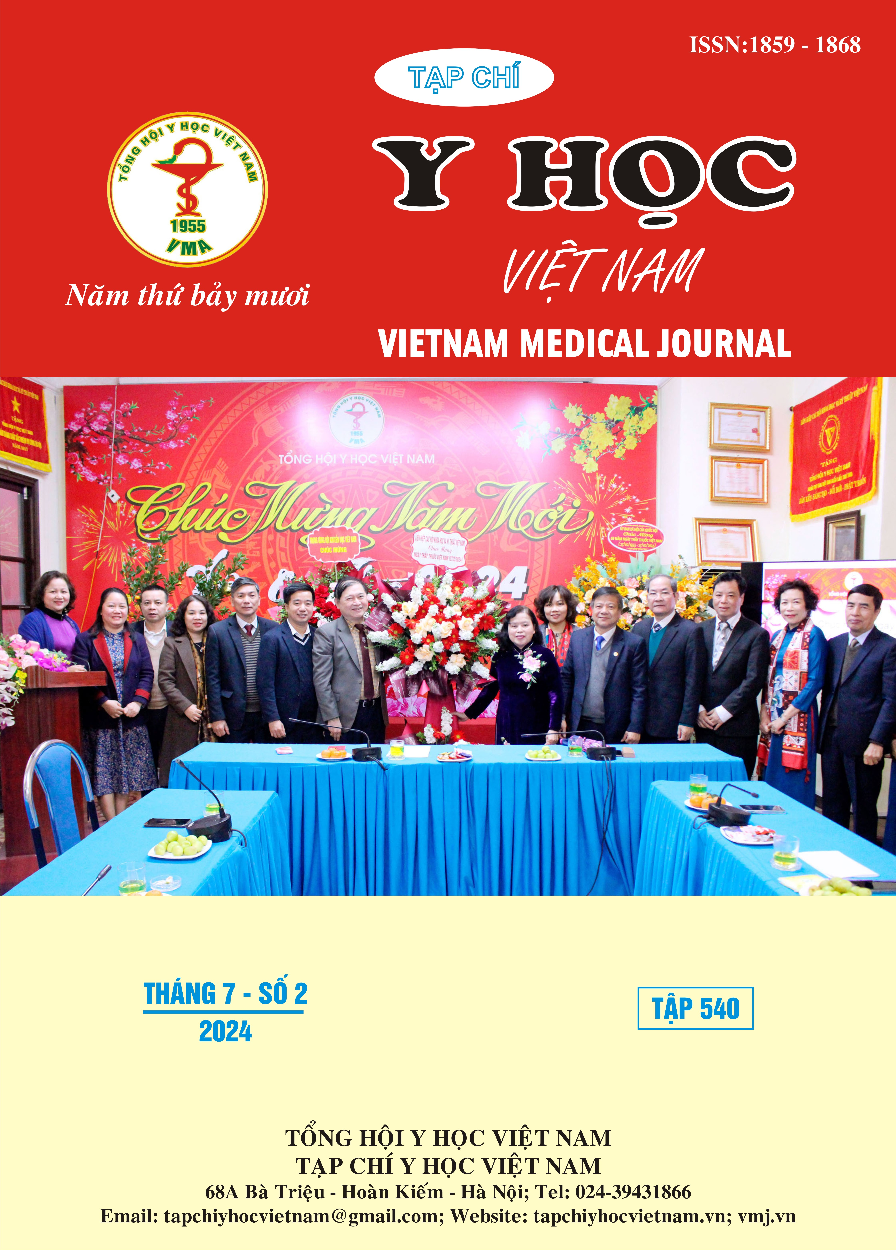THE PREVELANCE OF DEPRESSION AND THE DISTRIBUTION OF DEPRESSION SYNDROMES ACCORDING TO TRADITIONAL MEDICINE AMONG THE ELDERLY INPATIENTS IN TRADITIONAL MEDICINE HOSPITAL OF THUA THIEN HUE
Main Article Content
Abstract
Depression is the leading cause of diminished quality of life among the elderly inpatients at medical facilities. Research on the clinical characteristics of depression from the perspective of traditional medicine aims to standardize and enrich the basic theories of traditional medicine in depression studies. Objectives: To dertermine the prevalence of depression and elucidate the distribution of depression syndromes according to traditional medicine among the elderly inpatients in Traditional Medicine Hospital of Thua Thien Hue. Subjects and methods: A cross-sectional study included 420 elderly inpatients in Traditional Medicine Hospital of Thua Thien Hue from July 2022 to March 2024. Depression screening was conducted utilizing the Geriatric Depression Scale 30 items (GDS-30). Results: Among the 420 elderly inpatients, 195 were identified as having depression based on GDS-30 screening (46,4%). The study has described the clinical characteristics of common conditions, as well as the pulse and tongue characteristics observed in a group of elderly individuals with depression. The distribution of depression syndromes according to traditional medicine revealed: Liver qi stagnation syndrome (44,1%); Heart and spleen deficiency syndrome (23,1%); Heart and kidney yin deficiency syndrome (13,8%); Heart and gallbladder qi deficiency syndrome (12,3%) and Phlegm heat harassing the mind syndrome (6,7%). Conclusions: The prevalence of depression among the elderly inpatients was 46,4%. The study has described the characteristics of common conditions according to traditional medicine, as well as the pulse and tongue characteristics observed in a group of elderly individuals with depression. The most prevalent syndrome observed was liver qi stagnation syndrome (44,1%), the lowest was phlegm heat harassing the mind syndrome (6,7%).
Article Details
Keywords
Depression, elderly, GDS-30, traditional medicine, syndrome
References
2. Trần Quốc Bảo. Bệnh học Nội khoa y học cổ truyền và ứng dụng lâm sàng. Nhà xuất bản y học. 2020. 531-542.
3. Trần Như Minh Hằng, Nguyễn Đình Toàn. Giáo trình Module 27 - Tâm thần, Thần kinh. Nhà xuất bản Đại học Huế. 2023. 37 – 47.
4. Phạm Vũ Khánh. Lão khoa y học cổ truyền. Nhà xuất bản giáo dục Việt Nam. 2016. 23 – 36.
5. Nguyễn Minh Tú, Nguyễn Thị Mai, Trần Thị Hoa và cộng sự. Nghiên cứu tỷ lệ trầm cảm và một số yếu tố liên quan ở NCT tại một số xã, phường tại tỉnh Thừa Thiên Huế. Tạp chí Y Dược học – Trường Đại học Y – Dược Huế. 2021; 2(11): 60 – 69.
6. Thong Nguyen Van, Kien Trung Nguyen, Phuong Minh Nguyen et al. Vietnamese Version of the Geriatric Depression Scale (30 Items): Translation, Cross-Cultural Adaptation, and Validation. Geriatrics 2021,6,116. https://doi.org/10.3390/geriatrics6040116
7. Chuan Zou, Shanping Chen, Jing Shen et al. Prevalence and associated factors of depressive symptoms among elderly inpatients of a Chinese tertiary hospital. Clin Interv Aging 2018; 13: 1755 – 1762. https://doi.org/10.2147/CIA.S170346.
8. 中国中西医结合学会神经科专业委员会. 抑郁症中西医结合诊疗专家共识. 中国中西医结合杂志. 2020; 40(2): 141 – 148.
9. 王 燕, 陈 宏, 石秀梅 等. 老年抑郁症肝郁 气滞型症状相关因素的研究. 天津中医药大学学报. 2013; 32(2): 76 – 79.


